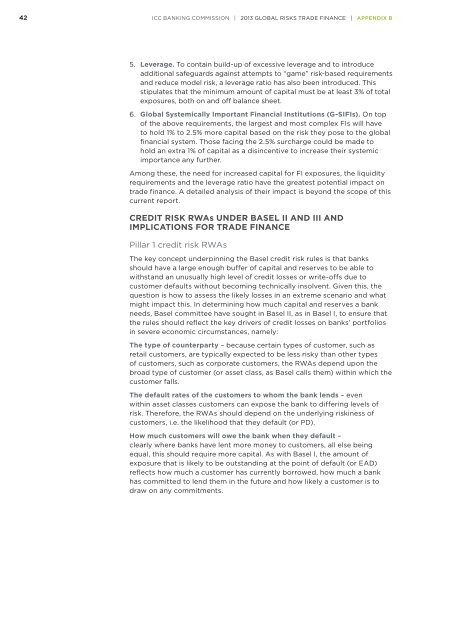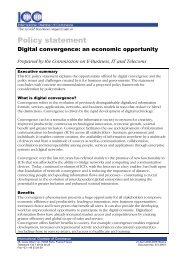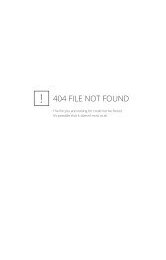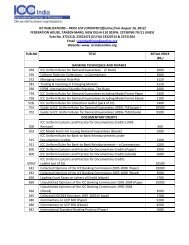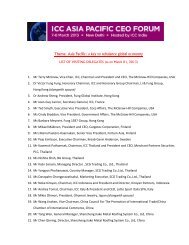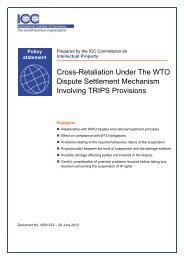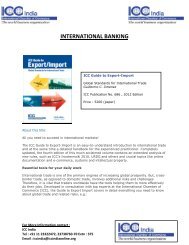2013 - ICC India
2013 - ICC India
2013 - ICC India
- No tags were found...
Create successful ePaper yourself
Turn your PDF publications into a flip-book with our unique Google optimized e-Paper software.
42<strong>ICC</strong> BANKING COMMISSION | <strong>2013</strong> GLOBAL RISKS TRADE FINANCE | APPENDIX B5. Leverage. To contain build-up of excessive leverage and to introduceadditional safeguards against attempts to “game” risk-based requirementsand reduce model risk, a leverage ratio has also been introduced. Thisstipulates that the minimum amount of capital must be at least 3% of totalexposures, both on and off balance sheet.6. Global Systemically Important Financial Institutions (G-SIFIs). On topof the above requirements, the largest and most complex FIs will haveto hold 1% to 2.5% more capital based on the risk they pose to the globalfinancial system. Those facing the 2.5% surcharge could be made tohold an extra 1% of capital as a disincentive to increase their systemicimportance any further.Among these, the need for increased capital for FI exposures, the liquidityrequirements and the leverage ratio have the greatest potential impact ontrade finance. A detailed analysis of their impact is beyond the scope of thiscurrent report.CREDIT RISK RWAs UNDER BASEL II AND III ANDIMPLICATIONS FOR TRADE FINANCEPillar 1 credit risk RWAsThe key concept underpinning the Basel credit risk rules is that banksshould have a large enough buffer of capital and reserves to be able towithstand an unusually high level of credit losses or write-offs due tocustomer defaults without becoming technically insolvent. Given this, thequestion is how to assess the likely losses in an extreme scenario and whatmight impact this. In determining how much capital and reserves a bankneeds, Basel committee have sought in Basel II, as in Basel I, to ensure thatthe rules should reflect the key drivers of credit losses on banks’ portfoliosin severe economic circumstances, namely:The type of counterparty – because certain types of customer, such asretail customers, are typically expected to be less risky than other typesof customers, such as corporate customers, the RWAs depend upon thebroad type of customer (or asset class, as Basel calls them) within which thecustomer falls.The default rates of the customers to whom the bank lends – evenwithin asset classes customers can expose the bank to differing levels ofrisk. Therefore, the RWAs should depend on the underlying riskiness ofcustomers, i.e. the likelihood that they default (or PD).How much customers will owe the bank when they default –clearly where banks have lent more money to customers, all else beingequal, this should require more capital. As with Basel I, the amount ofexposure that is likely to be outstanding at the point of default (or EAD)reflects how much a customer has currently borrowed, how much a bankhas committed to lend them in the future and how likely a customer is todraw on any commitments.


